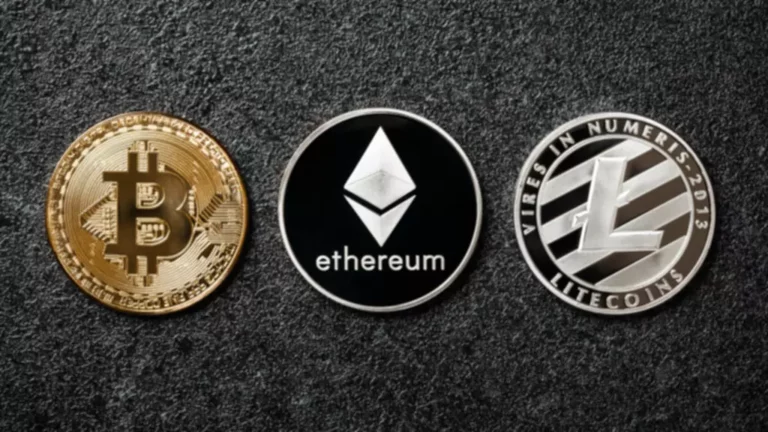Торговые сессии в трейдинге Kill Zone Циклы рынка Форекс SM Trader
Content
The goal of quota stuffing is to artificially drive up demand and prices for the stock in which the trader holds a position. By paying high frequency forex trading an additional exchange fee, trading firms get access to see pending orders a split-second before the rest of the market does. Large-sized orders, usually made by pension funds or insurance companies, can have a severe impact on stock price levels.
Components of High-Frequency Trading Systems
However, some critics argue that HFT firms may quickly withdraw their trades when there’s market stress, setting off more volatility and making it harder for other traders to buy or sell their positions. HFT makes extensive use of arbitrage, or the buying and selling of a security at two different prices at two Proof of personhood different exchanges. Although the strategy can be extremely risky, even a small difference in price can yield big profits. HFT algorithms can detect very small differences in prices faster than human observers and can ensure that their investors profit from the spread. Market-making is a strategy that plays a central role in high-frequency trading.
High-Frequency Trading Strategies
However, migrating to third-party cloud servers also entails privacy risks and reduced control. Regulatory comfort with widespread cloud https://www.xcritical.com/ usage in finance remains limited. Until data security and sovereignty concerns are addressed, cloud adoption by HFT will be gradual. HFT is also expected to expand across more asset classes and into new markets. While most prevalent in equities, HFT has moved into currencies, futures, and other assets. New exchange-traded products like cryptocurrencies are also seeing HFT penetration.
- Advanced machine learning models incorporate risk analysis for sharper forecasts.
- A piece of algo trading software may execute hundreds of trades per day, while an HFT system can execute many thousands of trades in a matter of seconds.
- HFT has improved market liquidity and removed bid-ask spreads that would have previously been too small.
- Some prominent players in this space, like Automated Trading Desk (ATD), account for a substantial percentage of trading volume on major exchanges.
- In theory, these markets should be perfectly correlated, but there is an inefficiency of 250-millisecond intervals.
- However, HFT will likely remain an influential force in stock trading given the competitive advantages it provides firms willing to invest in the infrastructure and technology required.
Frequently Asked Questions About the HFT Trading Strategy
A high six-figure investment is generally minimal for infrastructure like hardware, data feeds, and colocation. Many firms are founded by former exchange traders or tech experts and start with their own capital. First, note that HFT is a subset of algorithmic trading and, in turn, HFT includes Ultra HFT trading.

Strategies and Secrets of High-Frequency Trading (HFT) Firms
However, any policy actions should weigh benefits against costs to avoid over-regulation. The objective should be optimizing stability while encouraging financial innovation. A collaborative approach between regulators and industry helps ensure that HFT remains a constructive force. Internationally, regulators have taken diverse approaches to regulating HFT. In the United States, the Securities and Exchange Commission (SEC) and the Commodity Futures Trading Commission (CFTC) first focused on equity market microstructure issues like colocation and order types.
Opinions vary about whether high-frequency trading benefits or harms market performance. Either way, wise traders don’t try to time market trends; for the typical investor, a long-term buy-and-hold strategy will invariably outperform technology built for the short term. One notable VPS provider that caters specifically to high-frequency traders is ForexVPS.
A technical glitch or malfunction within an HFT system could trigger unintended consequences, impacting the entire market. This has meant that typically HFT is used by institutions that have access to the required equipment – such as investment banks and hedge funds. Relatedly, the market impact from high HFT volumes exacerbates volatility spikes. Since HFT systems react similarly to price movements, their collective reaction reinforces the original move even further.
Microwave networks, fiber optics, and colocation provide the low-latency feeds and fast order execution required. Statistical arb evolved from simple pair trading to sophisticated multidimensional strategies leveraging computing power. The massive scale of data analysis and rapid trading distinguish it from traditional quant funds.
AT aims to reduce that price impact by splitting large orders into many small-sized orders, thereby offering traders some price advantage. Although the spreads and incentives amount to a fraction of a cent per transaction, multiplying that by a large number of trades per day amounts to sizable profits for high-frequency traders. Blain Reinkensmeyer has 20 years of trading experience with over 2,500 trades placed during that time. He heads research for all U.S.-based brokerages on StockBrokers.com and is respected by executives as the leading expert covering the online broker industry.
As soon as an asset meets a pre-determined price set by the algorithm, the trade occurs, satisfying both buyer and seller. HowToTrade.com helps traders of all levels learn how to trade the financial markets. Retail traders need not remain bystanders in the realm of high-speed trading. Expert Advisors (EAs) provide an avenue to emulate certain HFT characteristics. EAs can swiftly react to market changes, executing trades in mere seconds, thus granting a taste of high-frequency-like trading to a broader audience. Unarguably, high-frequency Trading (HFT) offers a complex landscape for retail traders.
Another concern about HFT is that it gives an unfair advantage to large financial institutions over individual investors. Individual, small investors are at a disadvantage because they lack the resources and speed to process information as efficiently as high-frequency trading computers. The method relies on mathematical models and computers rather than human judgment and interaction and has replaced a number of broker-dealers.
This allowed algorithmic trading firms to send orders directly to the exchange via computer systems and receive confirmations of trades executed in milliseconds. High-frequency trading (HFT) emerged in the late 1990s as technological advances allowed for ever-faster trade execution times. In the beginnings of electronic trading in the stock market, trades were measured in minutes or seconds.
The company actively trades on NSE, BSE, and MCX using smart order routing and proprietary execution algorithms. Degrees in fields like computer science, engineering, mathematics, statistics, or finance provide relevant hard skills. Coursework in programming, machine learning, algorithms, and data analysis is especially useful. Academic credentials from top universities demonstrate analytical rigor to potential HFT employers. Supplement formal education by teaching yourself skills like Python coding. Looking ahead as HFT grows more pervasive, calls for safeguards against volatility and disruption are rising globally.

